David Bowie's love affair with Japanese style
- Published
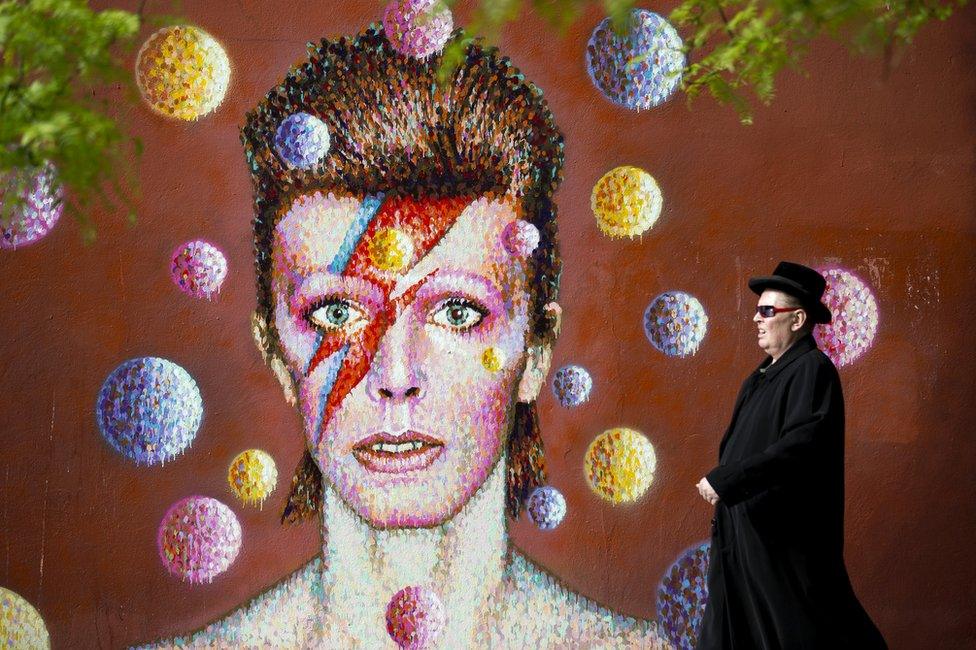
The iconic Ziggy Stardust look has been immortalised in a piece of street art in Brixton
David Bowie, who died this week, was a well-known Japanophile, adopting many elements of Japanese culture into his stage performances.
"He was someone who knew how to express himself both with music and with fashion," Japanese designer Kansai Yamamoto told the BBC.
"Someone like that may not be so rare these days, but he was one of the pioneers to do both."
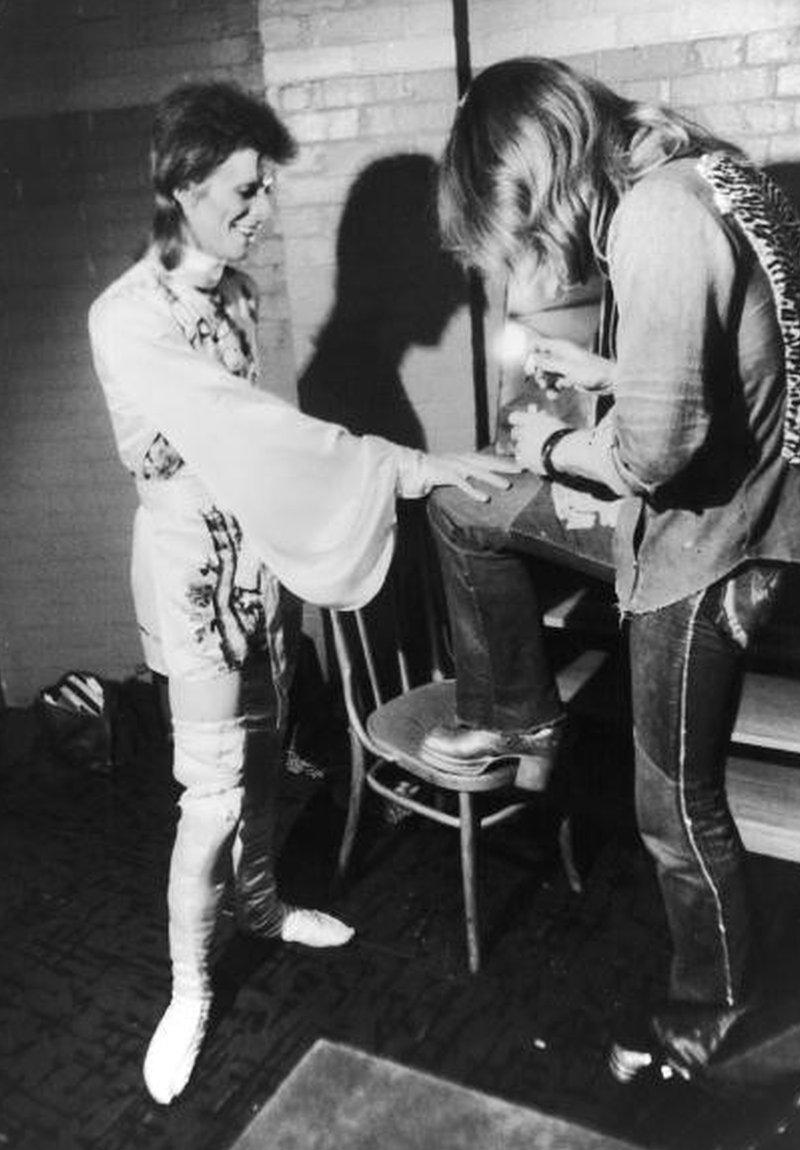
Yamamoto designed for Bowie through both his Ziggy Stardust and Aladdin Sane eras
Mr Yamamoto, the creative force behind some of Bowie's most iconic stage outfits, first got to know Bowie in the 1970s, when the singer was often visiting Japan, and trying to break into the US market.
"I don't know why he was so attracted to things Japanese, but perhaps it wasn't so much Japan or Japanese-ness itself. He knew when he looked good in something.
"When you wear something and you look really good... you feel confident and good about yourself. I think my designs and costumes had that effect on him."
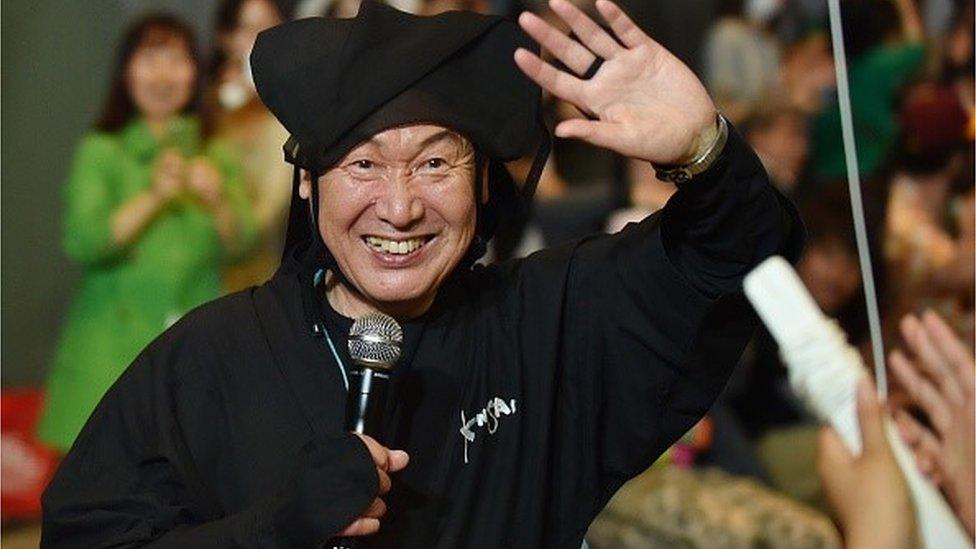
Kansai Yamamoto said his relationship with Bowie "went beyond nationalities, beyond gender"
Helene Thian, a fashion historian and lifelong fan who has written extensively about Bowie, external, agreed. She said Bowie had often been noted as having had "this beautiful androgynous face and body, which suited Kansai Yamamoto's unisex style".
'Shapeshifting' androgyny
Bowie's Japanese style had already been developing through his interest in Japanese theatre.
In the mid-1960s, he studied dance with Lindsay Kemp, a British performance and mime artist who was heavily influenced by the traditional kabuki style, with its exaggerated gestures, elaborate costumes, striking make-up, and "onnagata" actors - men playing female roles.
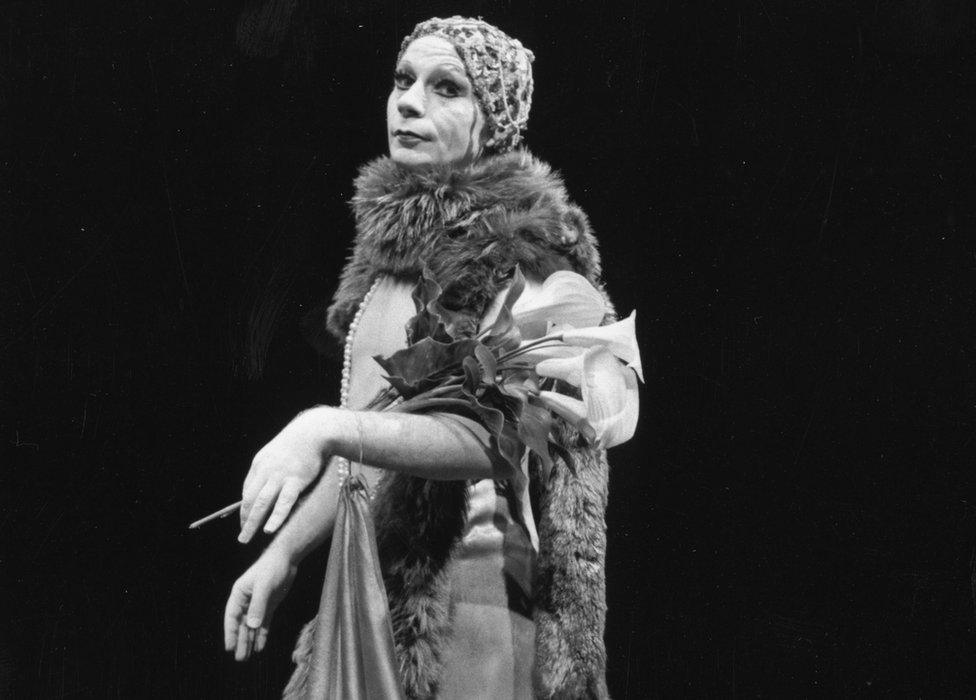
Lindsay Kemp, performing here in 1974, had been influenced by the intensely stylised productions of Japanese traditional theatre
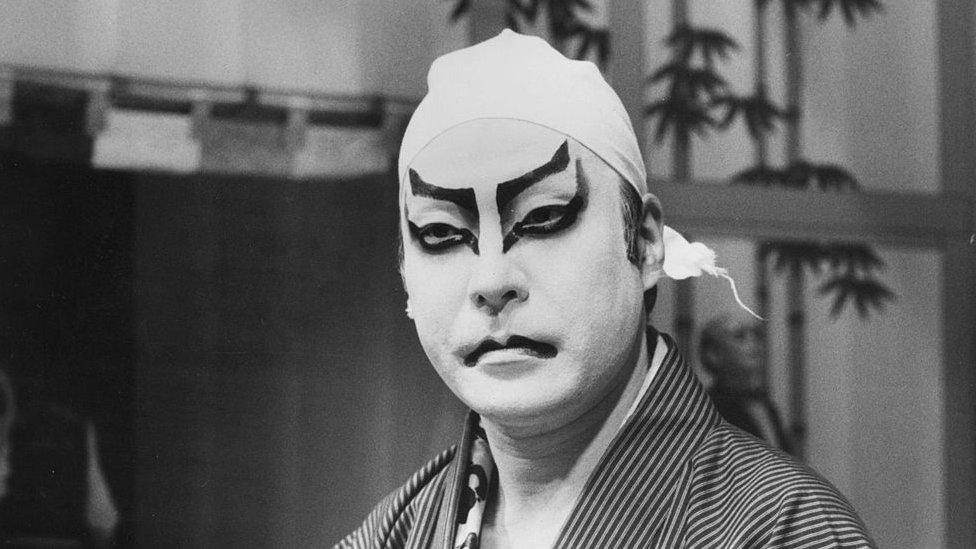
The dramatic make-up used by kabuki became part of the Ziggy Stardust look
Bowie was a natural "shapeshifter", says Ms Thian, and his training with Kemp and onnagata style helped him as he explored ideas of masculinity, exoticism and alienation.
He even learned from famed onnagata Tamasaburo Bando how to apply traditional kabuki make-up - its bold highlighted features on a white background are evident in the lightning bolt across the Ziggy face.
"It wasn't trying to be literal interpretation" of onnagata, said Ms Thian, "but rather inspired by its gender-bending androgyny. That's what makes it so powerful, it's more evocative."
'Quick change' master
Mr Yamamoto said he wasn't sure why he and Bowie had such an affinity, but that "something resonated between us, something that went beyond nationalities, beyond gender".
Through his style and performances, he said, Bowie "broke one sexual taboo after another".
"What he did in terms of bridging the male-female gap continues to this day," he said, including in the increasing acceptance of gay relationships in Japan.
Among his most famous outfits for Bowie was Space Samurai,, external a black, red and blue outfit adapting the hakama, a type of loose trousers which samurais wore and which are still worn by martial arts practitioners.
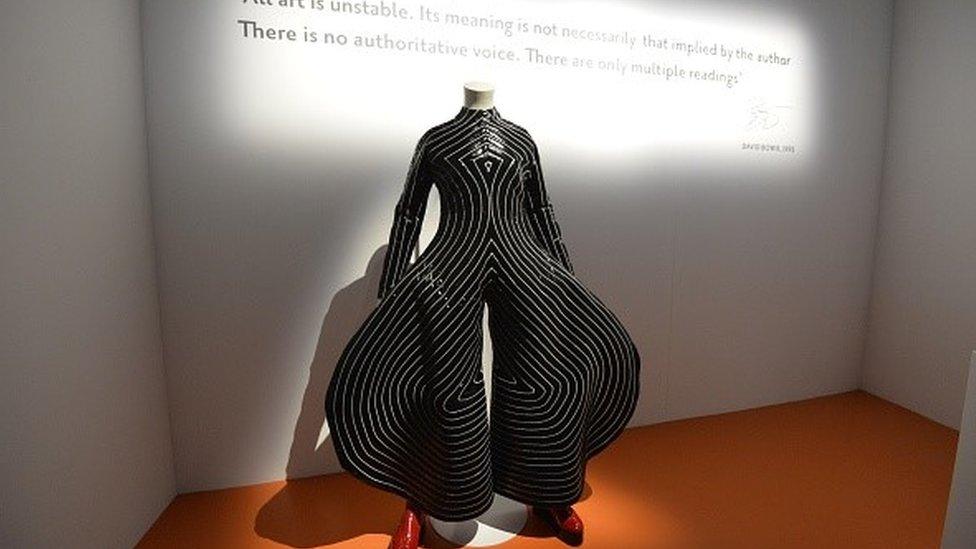
Yamamoto's outlandish costumes became a central element of Bowie performances
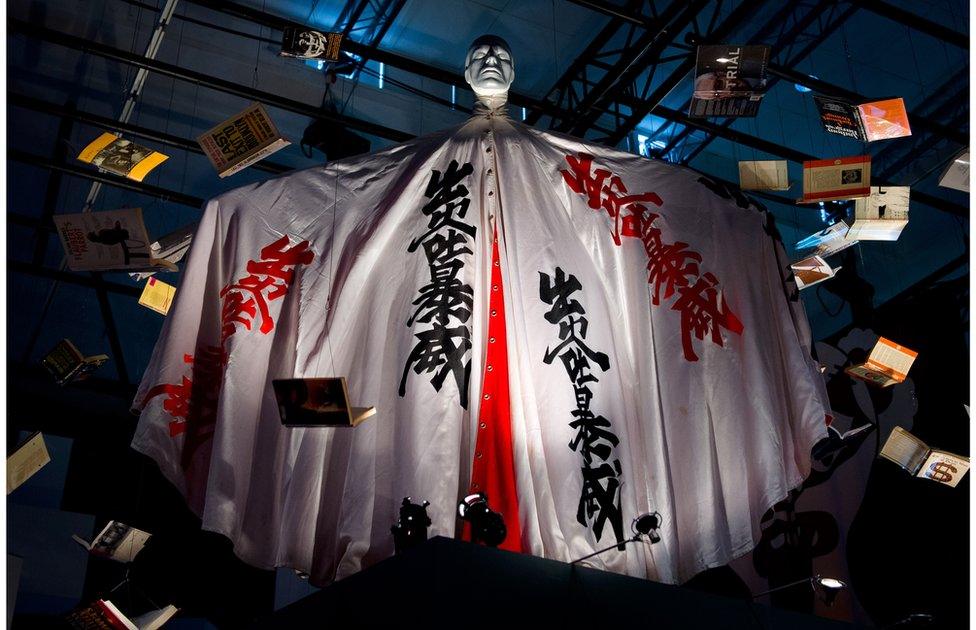
The dramatic cape could be whipped away on stage mid-performance
He also sometimes wore a kimono-inspired cape with traditional Japanese characters on it which spell out his name phonetically, but also translate to "fiery vomiting and venting in a menacing manner".
Ms Thian says Bowie was also "absolutely the first" Western artist to employ the hayagawari - literally "quick change" - technique from kabuki, says Ms Thian, with unseen stagehands ripping off the dramatic cape on stage to reveal another outfit.
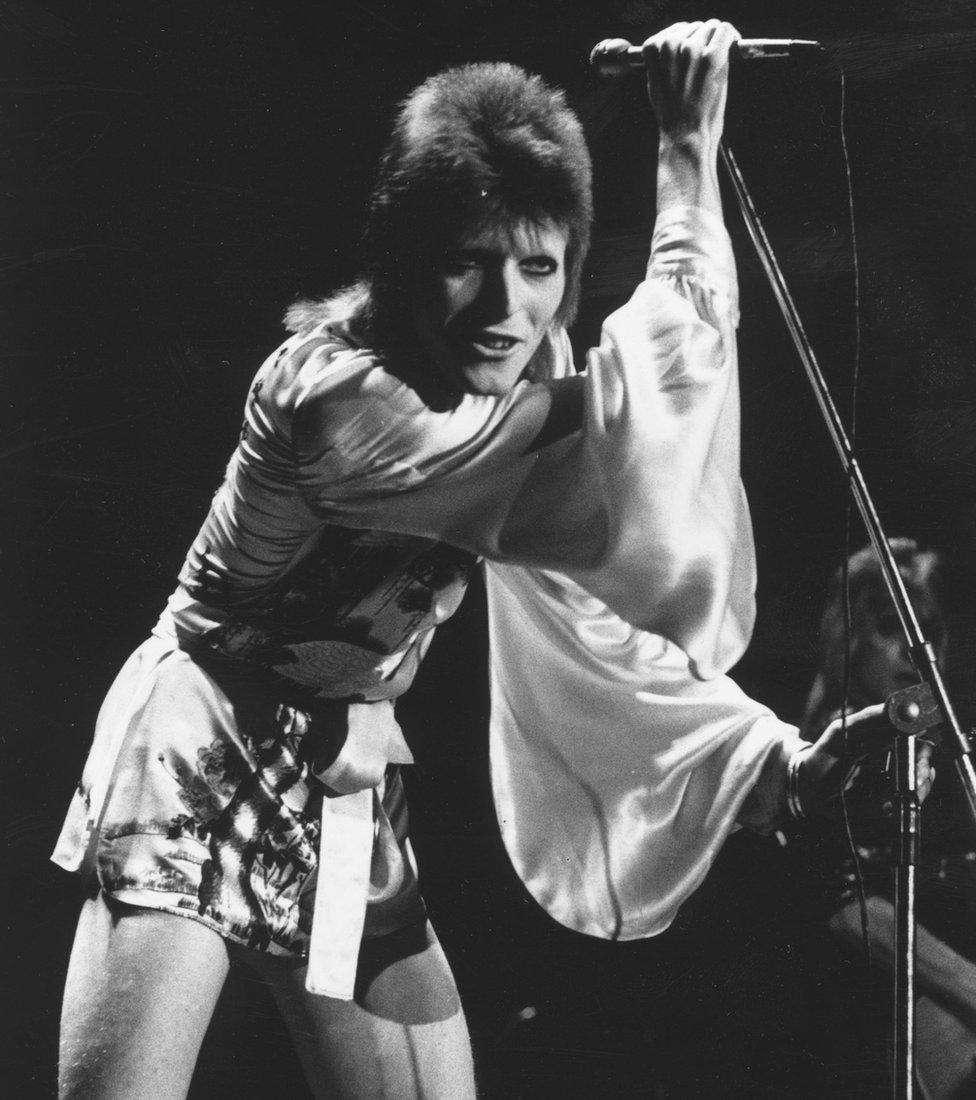
The kimono robe also influenced some of his fashion, such as this Ziggy outfit which is a shortened version with a classic Japanese print on it
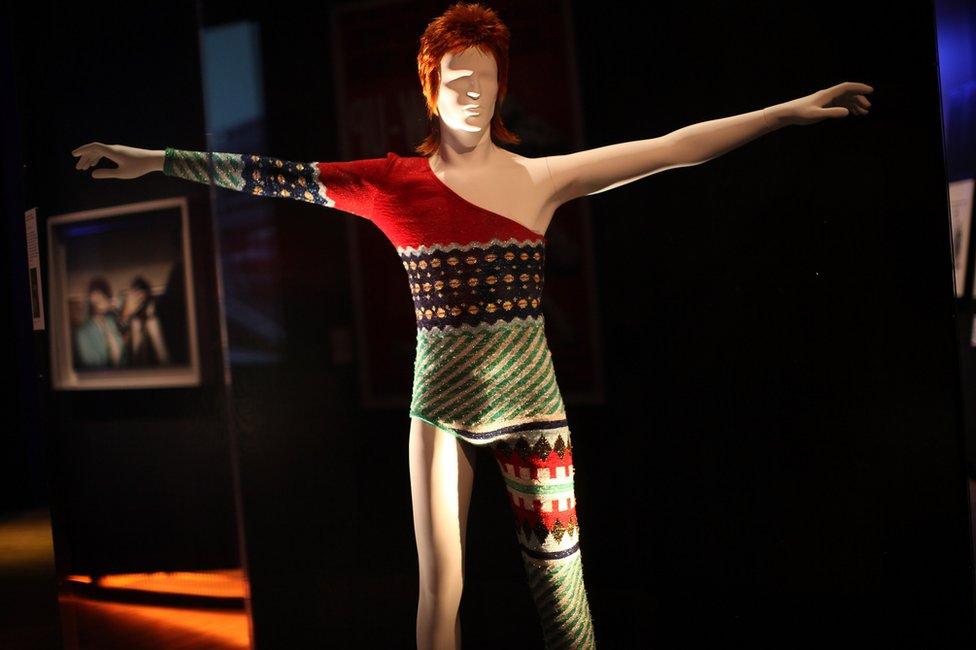
The elaborate clash of prints on this knitted bodysuit can also be seen as a reference to yakuza (organised crime syndicates) tattoo patterns, Helene Thian has written
'A very beautiful man'
It wasn't just his appearance - references to Japan are scattered through Bowie's music - his 1977 album Heroes even features the track Moss Garden on which he plays a Japanese koto, a kind of zither.
These days, an artist in Bowie's position might be accused of cultural appropriation - stealing another culture for his own purposes - but Ms Thian says it was never seen that way in Japan.
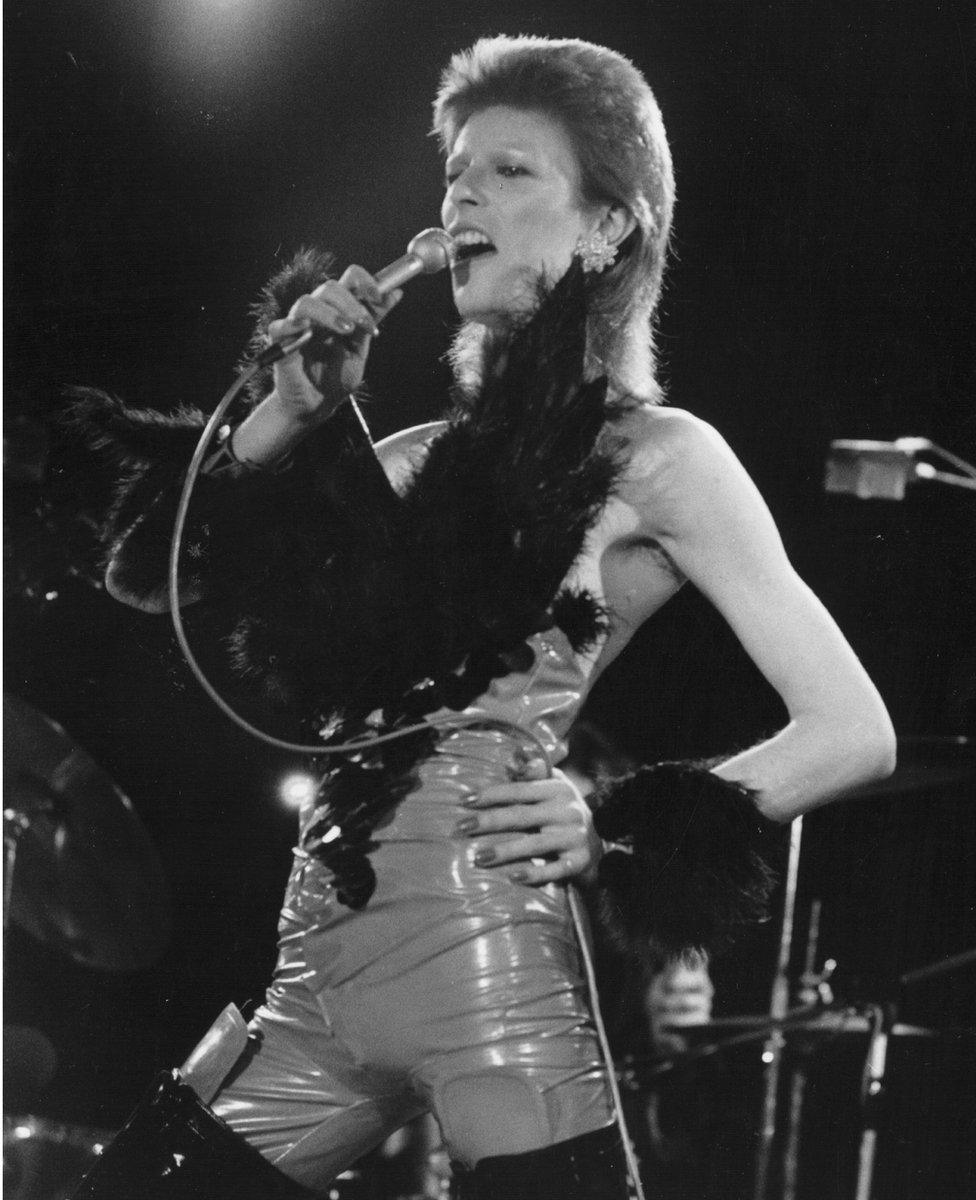
Bowie often wore androgynous or women's clothing in his Ziggy Stardust phase
"Bowie was born to be the ultimate diplomat and artiste," she says.
"He took his creativity and fused it with his impulses to meld East and West and come up with a healing of the world in this post-war period."
This was "a homage to Japanese culture and the Japanese loved it", she said, as Bowie challenged the tendency of Western fashion at the time to lump all Asian styles together as "Orientalism".
'Eternal hero'
Indeed, Japan embraced Bowie back, and he remains an icon there, with his glam rock style influencing generations of bands and musicians.
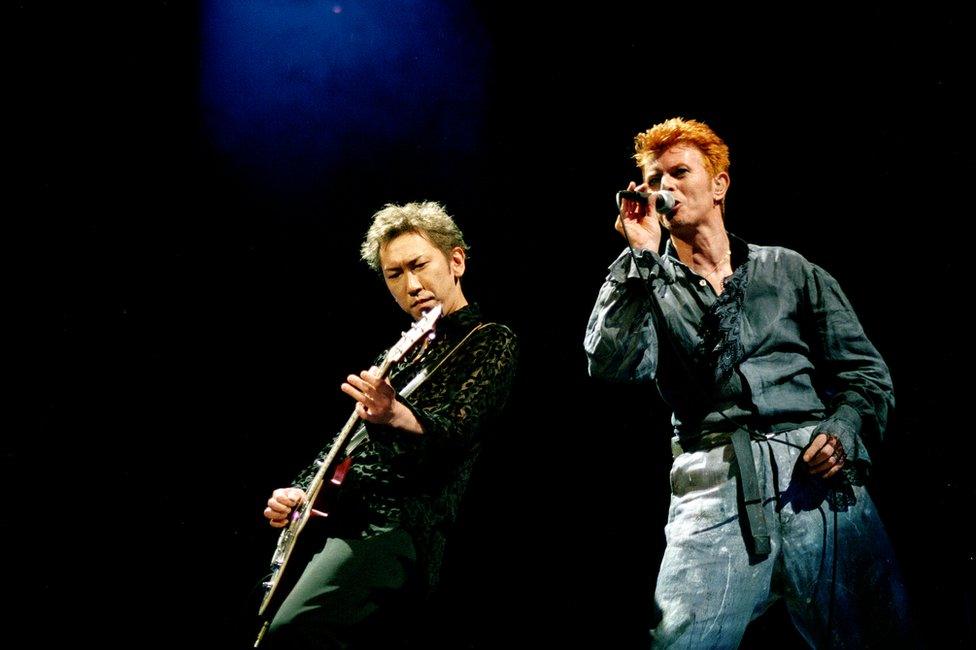
Hotei shared with the BBC this photo of them playing onstage together at Bowie's 1996 Tokyo gig
Renowned rock guitarist Hotei Tomayasu, best known outside Japan for composing the theme for Quentin Tarantino's Kill Bill films, told the BBC: "[Bowie] is the one who truly changed my life. My eternal hero and inspiration."
Bowie is also known in Japan for his role as Maj Jack Celliers in the 1983 iconic film Merry Christmas Mr Lawrence, directed by the renowned Nagisa Oshima.
The film, set during World War Two in a Japanese camp for prisoners, pits Bowie's character and another soldier against two Japanese officers, one of whom is played by the famous musician Ryuichi Sakamoto.
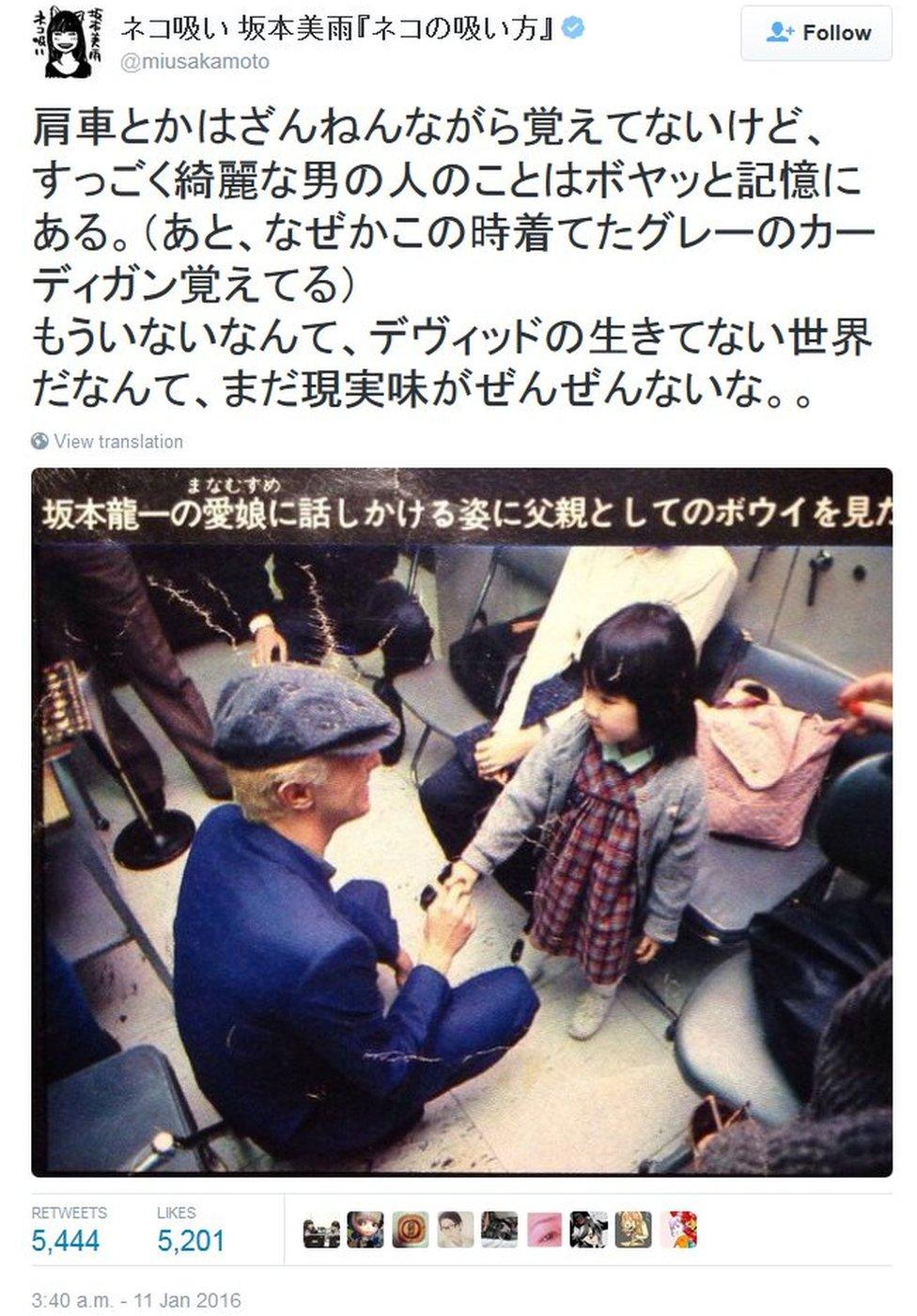
On Twitter, Sakamoto's ex-wife Akiko Yano recalled how Bowie carried their young daughter - Miu - on his shoulders when the family visited the Roppongi neighbourhood in Tokyo with Bowie in the 1980s.
Miu Sakamoto tweeted this picture of herself as a little girl shaking hands with the singer, saying she vaguely recalled meeting "a very beautiful man".
"(He is) no more. A world in which David is not living still feels totally unreal."
Reporting by Tessa Wong, Anna Jones, Yuko Kato